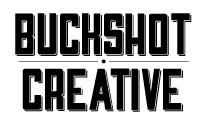Going further into concepts of piquing audiences curiosity, I came across Stephen Anderson‘s post in the Johnny Holland blog on applying curiosity to your audience in customer experience and design.
 There are two particular components that are pretty brilliant. Hot Wheels sells Mystery Cars, which are cars covered in solid black plastic packaging, so you have no idea what car you’ll buy. This reminds me of collecting cards, especially when hologram prints would randomly be in the mix.
There are two particular components that are pretty brilliant. Hot Wheels sells Mystery Cars, which are cars covered in solid black plastic packaging, so you have no idea what car you’ll buy. This reminds me of collecting cards, especially when hologram prints would randomly be in the mix.
The other example is California Pizza Kitchen offering special Don’t Open It rewards cards- they can only be redeemed when your server opens the card. If you open the card prematurely (to find out the offer), the offer is null and void. Even better than a lottery card, the mystery rewards card is a continuous Schrodinger’s Cat of uncertainty: the card could be everything or nothing, and you won’t find out until you make a second purchase. They key benefit in both of these cases is not that there’s 100% mystery- we know the opportunity is either a Hot Wheels car similar to our current collection, or a prize only available at California Pizza Kitchen. Compare this to the mystery box in a carnival or a novelty store, the pieces are likely just the store clearing out inventory and the value is likely poor all around.
This is also a key driver in the success of Diamond Candles: a prize ring is in every single candle, but some of these rings can be worth up to $5,000 (Sheriff Bullock from Deadwood, however, was not too keen on these offers).


